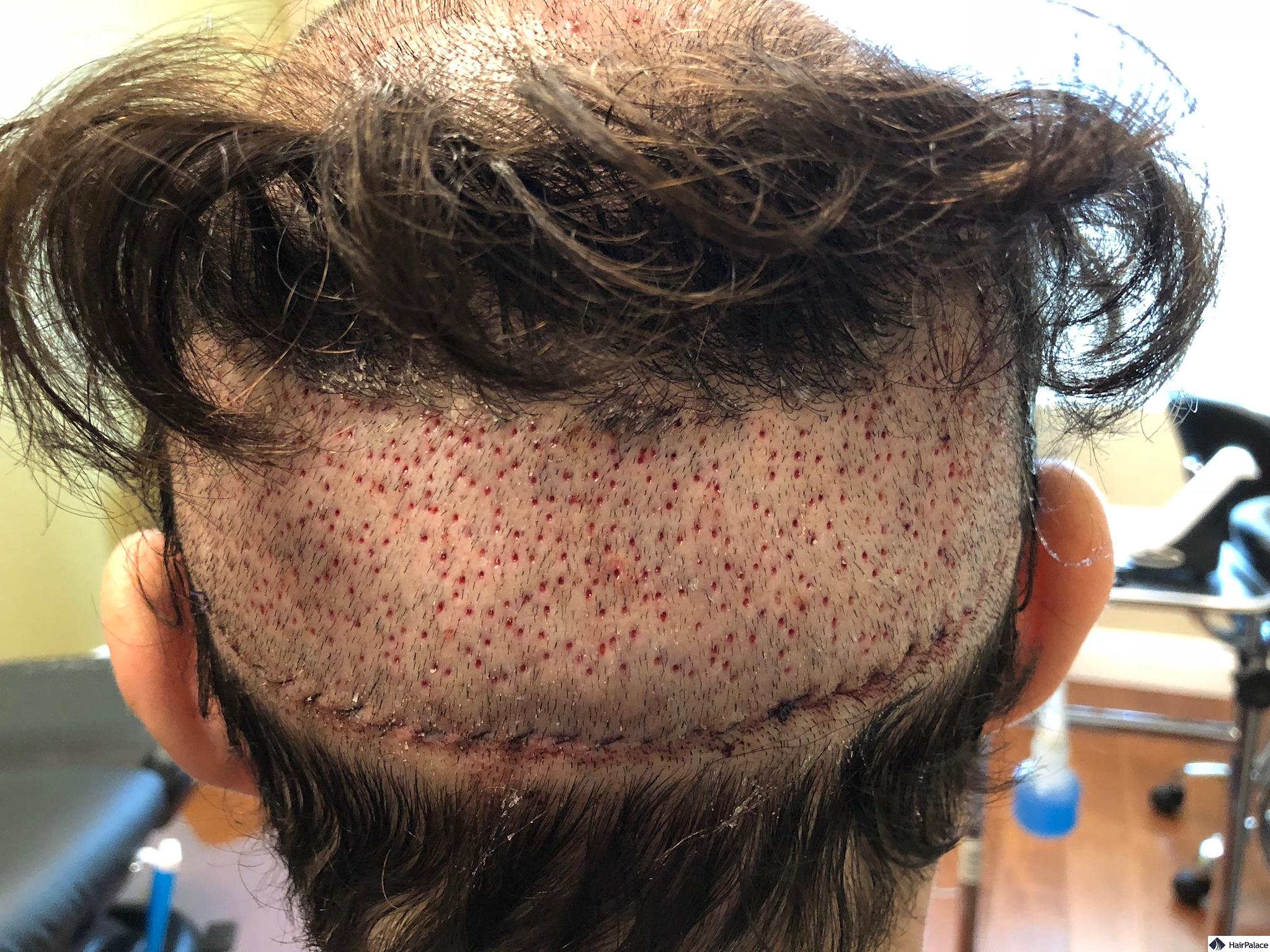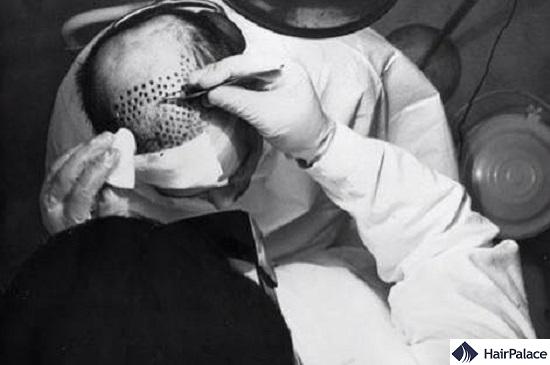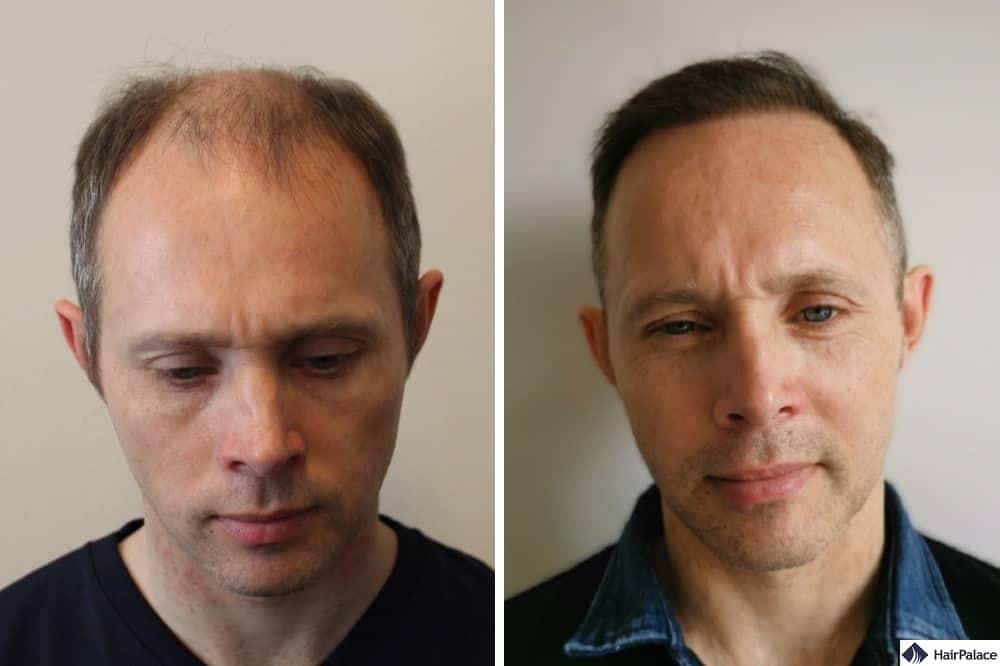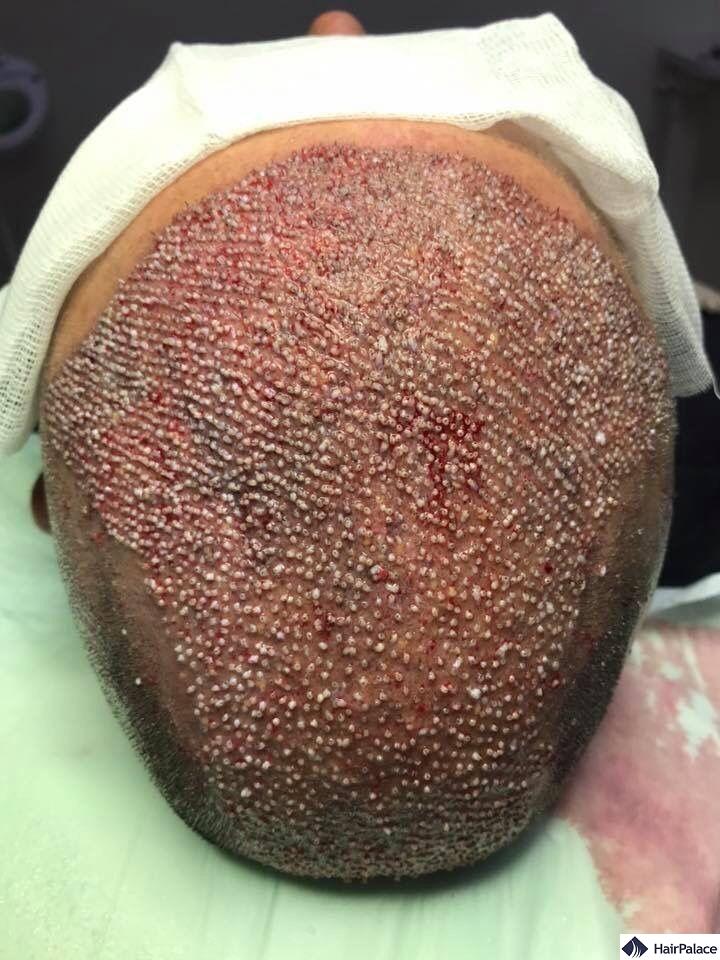Hair Plugs: Procedure, Risks and Success Rates in 2025

Hair plugs were a critical stage in the evolution of hair restoration procedures.
Surgeons used this technique for decades after the late dermatologist Dr. Norman Orentreich created it in the 1950s.
During the treatment, surgeons removed sections of hair and skin from the back of the scalp and implanted them into balding zones.
Hair transplantation has improved significantly since, and achieves more convincing, natural-looking results.
But are they still implanted into scalps today?
In this post, we’ll look at Dr. Orentreich’s pioneering work on hair plugs and why surgeons no longer rely on this technique.
- What are they?
- Is it still available?
- Hair plugs vs. modern techniques
- Benefits
- Side effects
- Are you a good candidate?
- Can you switch to a modern technique?
What are hair plugs?
When Dr. Orentreich implanted the first hair plugs in the 1950s, it was a huge step forward in hair restoration.
But the results were generally unimpressive, especially when compared to the incredible feats that modern surgeons achieve.
Specialists punched out round pieces of skin (the “plugs”) containing multiple hair follicles from the back of the patient’s scalp. Each plug was approximately 4 millimetres across.
Surgeons then inserted the plugs into balding areas as needed: the more severe the hair loss, the more plugs required.
However, this technique cultivated a hairline that looked unnatural and resembled a doll’s scalp.
Doctors continued to hone the process, though. Grafts became smaller over time and led to more natural, realistic hair restoration.
As a result, hair plugs were less popular by the start of the 21st century and were replaced by the FUT hair transplantation method.
FUT involves cutting a section of skin from the rear of the scalp to extract its follicles, and then preparing them for implantation into target areas.
FUE is an updated take on FUT and tends to be the most popular of the two techniques.

Do surgeons still perform hair plugs for men?
Surgeons no longer offer traditional hair plugs — they’re likely to offer patients a more effective, reliable solution instead. The latest techniques offer crucial improvements, such as:
- More natural, authentic, discreet results.
- Faster procedures.
- Reduced risk of visible hair transplant scarring and holes.
The shorter duration of modern hair transplant procedures is one of the most important improvements.
Surgeons can complete today’s procedures within 4 to 8 hours (on average), whereas full hair plug implantation took around 16 weeks to complete in extreme cases.
Hair plugs vs hair transplant
Let’s explore the differences between FUT, FUE, stem cell hair transplants and hair plugs:
FUT
This method emerged in the mid-90s and became a popular replacement for the old method at the start of the next decade.
Surgeons start this procedure by removing a strip of skin from the back of the head and then harvesting its follicles.
They prepare these for implantation, then insert them into areas affected by hair loss.
FUE
FUE hair transplantation technique is a more modern hair transplant technique than FUT.
Surgeons remove individual follicles directly from the scalp instead of taking a strip of skin.
This reduces the risk of visible scarring.
FUE offers various advantages over other methods:
- It’s an effective procedure for patients with lower hair density.
- Recovery is more comfortable with less visible scarring.
- The recovery period tends to be quicker.
The price of the treatment depends on multiple factors. However, with just a 2-hour flight to Budapest, you can save 70% of your hair transplant cost.

Stem cell hair transplants
Stem cell hair transplantation is one of the newest methods available: a surgeon will remove a small sample of skin from your scalp and replicate its follicles in a sterile laboratory.
Research into the effects of this technique is ongoing, especially regarding its safety.
They will likely become more widely available and convenient in years to come.
Advantages of standard hair plugs
While hair plugs for men were groundbreaking when introduced, their value has diminished substantially since.
Modern methods offer better results, a more natural aesthetic, and quicker recovery.
You’ll likely feel more satisfied with the way your hair looks after a modern hair restoration procedure than if you opted for a traditional hair plugs treatment.
What are the side effects?
Hair plugs were known for restoring hair with unnatural results, creating hair that resembled a doll’s.
They also carried a greater risk of complications than modern techniques, such as:
- Infected hair transplant
- Bleeding
- Scarring
- Pain
- Numbness in scalp
- Swelling after hair transplant
- Unsatisfactory results
- Ingrown hairs
The best hair restoration surgeons will discuss potential side effects during your consultation to help you make an informed decision.
Infected hair plugs
Infected hair plugs, a complication sometimes arising from hair transplantation surgery, occur when the implantation sites become contaminated with bacteria.
Bad hair plugs can lead to symptoms such as redness, swelling, pain at the transplant site, and sometimes pus formation.
Prompt medical attention is crucial for managing this condition, often involving the use of antibiotics and proper wound care.
If left untreated, infection can lead to more severe complications like scarring and poor growth of the transplanted hair.

Who is the best candidate for a hair transplant?
If you’re affected by hair loss, hair transplantation is the only treatment option that offers a permanent solution.
The best way to find out if you’re a good hair transplant candidate is to book a consultation with your chosen clinic.
They will evaluate your hair loss and advise on the appropriate treatment options.
Can you change your hair plugs to a modern technique?
You may undergo one of the latest hair transplant procedures if you have enough follicles to harvest.
Otherwise, surgeons may be unable to remove enough donor follicles without making your hair look thinner at the back and sides, or creating visible scarring.
Hair Plugs FAQ
Generally, hair transplants achieve more success than hair-growth products purchased over the counter. However, it takes time: between 10 and 80% of transplanted hairs will grow back in full in around three or four months. This will become thinner over the years, like your existing hair.
It’s unlikely that you’ll see major changes in your hair growth within six months of undergoing a hair transplant, but the results should be visible after a full year. As healthy follicles are implanted into bald or thinning areas of the scalp, hair transplants typically last a lifetime.
Hair plugs have attained a poor reputation because they have created results that appeared unnatural: some patients’ scalps have highly visible follicles and resemble a doll’s head.
They may appear to be completely different treatments, but hair plugs are actually a type of transplant. The term “hair transplant” refers to procedures using implants to cover thinning or baldness. A hair plug is one type of implant, comprising a cluster of hairs.
They work by transplanting small sections of scalp with hair from a denser area, typically the back of the head, to a bald or thinning area. This surgical procedure redistributes hair to cover bald spots, leading to a fuller appearance. Over time, these transplanted hairs continue to grow in their new location.
The cost can vary widely depending on the extent of the transplant and the clinic’s location, but on average, it ranges from £4,000 to £15,000. This price can be influenced by the number of hair grafts needed and the specific technique used.
Hair plugs appear as clumpy, unnatural clusters of hair, often spaced apart, giving a “doll hair” effect. This occurs because older transplant techniques used large grafts, creating a patchy, uneven look compared to modern hair restoration methods.
Last medically reviewed on March 4th, 2025
- Garg AK, Garg S. Complications of Hair Transplant Procedures-Causes and Management. Indian J Plast Surg. 2021 Dec 31;54(4):477-482. doi: 10.1055/s-0041-1739255. PMID: 34984088; PMCID: PMC8719980.https://pubmed.ncbi.nlm.nih.gov/34984088/
- Agrawal M, Lotti J, França K, Fioranelli M, Roccia MG, Lotti T. The evolution of artificial hair implantation. J Biol Regul Homeost Agents. 2017 APR-JUN;31(2 Suppl. 2):169-177. PMID: 28702978.https://pubmed.ncbi.nlm.nih.gov/28702978/
- Epstein JS. Evolution of techniques in hair transplantation: a 12-year perspective. Facial Plast Surg. 2007 Feb;23(1):51-9; discussion 60. doi: 10.1055/s-2007-970164. PMID: 17330774.https://pubmed.ncbi.nlm.nih.gov/17330774/
- Rousso DE, Presti PM. Follicular unit transplantation. Facial Plast Surg. 2008 Nov;24(4):381-8. doi: 10.1055/s-0028-1102902. Epub 2008 Nov 25. PMID: 19034815.https://pubmed.ncbi.nlm.nih.gov/19034815/


